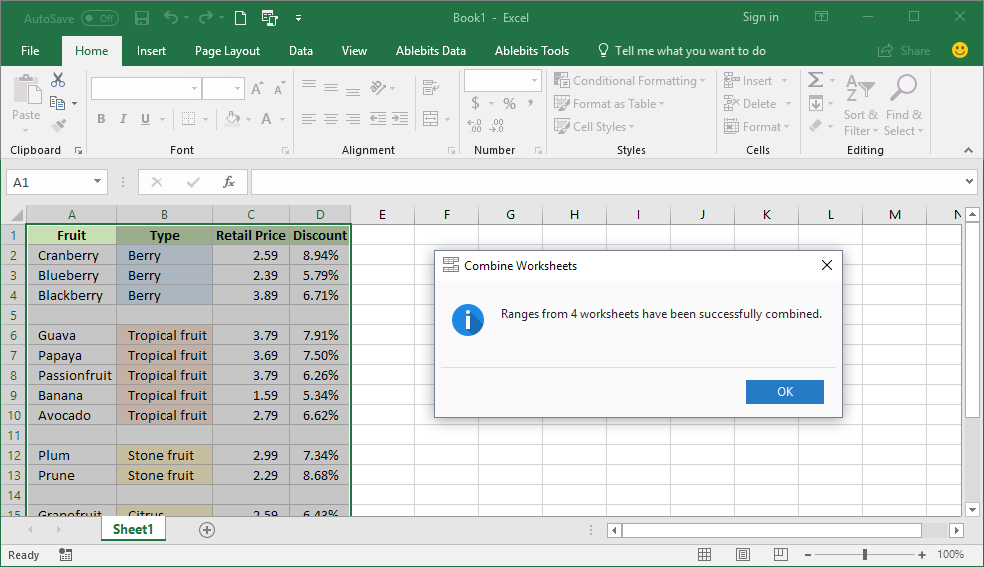5 Ways to Extract Single Excel Sheet Easily

Extracting a single Excel sheet from a workbook can be a tedious task, especially if you have to repeat it frequently. Whether you're managing spreadsheets for a large project, needing to share specific data with team members, or just arch cleansing your data, knowing how to efficiently extract sheets will save you time and reduce errors. Here, we outline five straightforward methods to achieve this, each suited to different needs and skill levels.
Method 1: Using Excel's Built-In Copy Feature

The simplest way to extract a single sheet involves Excel's built-in capabilities:
- Open your workbook containing the sheet you want to extract.
- Right-click on the sheet tab at the bottom and select 'Move or Copy.'
- In the dialog box, choose (new book) from the dropdown and check 'Create a copy.'
- Click 'OK.' The sheet will now be in a new workbook.
Method 2: Manual Sheet Extraction

If you prefer a hands-on approach, here's how you can manually extract a sheet:
- Open the Excel file.
- Select the entire sheet by clicking the triangle at the top-left corner where the column headers meet the row numbers.
- Copy the selection (Ctrl+C).
- Open a new Excel workbook and paste the data (Ctrl+V) into a new sheet.
💡 Note: Be cautious with formatting and linked cells. If your original sheet has complex references, they might not translate well when pasted into a new workbook.
Method 3: Utilizing VBA

For those familiar with Visual Basic for Applications (VBA), scripting can automate the extraction:
- Open the Excel file.
- Press Alt + F11 to open the VBA editor.
- Insert a new module (Insert > Module) and paste the following code:
|

This VBA script will copy the specified sheet to a new workbook and save it in a specified location.
Method 4: Power Query

If your data extraction needs are more complex, Power Query can be an excellent tool:
- Go to the Data tab > Get Data > From File > From Workbook.
- Select your file, then choose 'Load' to load the data into Excel.
- In Power Query Editor, filter your dataset to include only the data from the desired sheet.
- Close and load to a new workbook.
Power Query is particularly useful for transforming and cleaning data before extraction.
Method 5: Using Excel Add-ins

Several Excel add-ins can simplify the process of sheet extraction:
- Install an add-in like Excel-Tool or Worksheet Manager.
- Open the workbook and select the add-in from the Excel toolbar.
- Use the add-in's interface to select the sheet you want to extract and specify where to save the new workbook.
💡 Note: Add-ins offer functionalities beyond basic extraction, like merging sheets, batch operations, etc.
Having these methods at your disposal ensures that you can choose the best approach for your workflow. Whether you need quick, simple extraction or more complex data manipulation before exporting, these techniques cover the spectrum of needs from basic to advanced.
Summing up our discussion, we've explored five ways to extract a single Excel sheet: using Excel's built-in features, manual extraction, VBA scripting, Power Query, and Excel add-ins. Each method has its advantages, tailored to different user skill levels and specific project requirements. By understanding these options, you can streamline your data management tasks, reduce manual work, and minimize the risk of errors during data handling.
Why would I need to extract a single Excel sheet?

+
Extracting a single sheet from an Excel workbook is useful for sharing specific data, reducing file size, or focusing on a particular dataset for analysis or reporting without the clutter of other sheets.
Can I automate the extraction process?

+
Yes, using methods like VBA scripting or Power Query, you can automate the extraction of sheets, making it an efficient process for repetitive tasks.
What are the risks of manually copying and pasting Excel data?

+
Manually copying and pasting data can lead to errors like missed data points, formatting issues, or broken cell references, especially if the sheet contains complex formulas or data links.